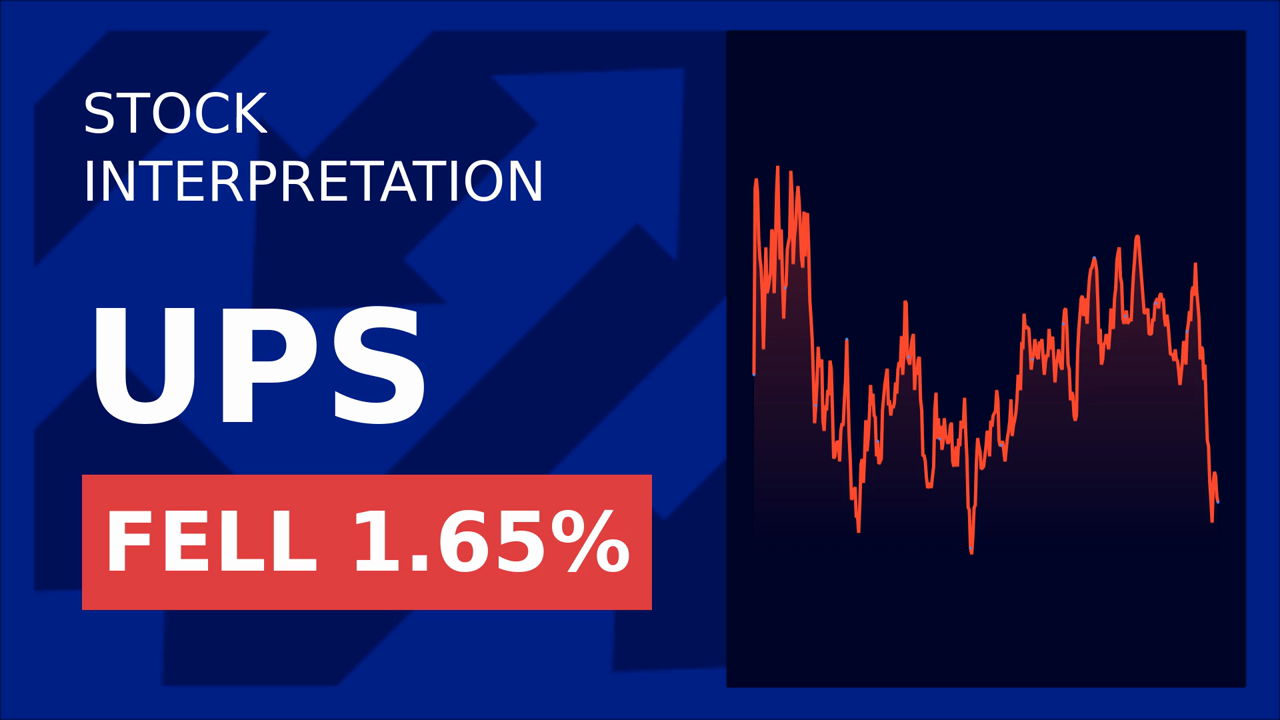UPS Stock Has Upside Despite Recession Fears
In an environment where global trade tensions and recession fears have rattled blue-chip stocks, UPS (UPS) has emerged as a paradoxical opportunity. While its shares have slumped over 15% year-to-date (YTD) in 2025 amid macroeconomic headwinds, the company’s strategic reshaping and margin-driven initiatives position it to outperform peers in a slowdown. Let’s dissect the data behind this divergence.

The Financial Reality: Resilience Amid Revenue Declines
UPS’s Q1 2025 results reveal a company prioritizing profitability over top-line growth. Consolidated revenue dipped 0.7% to $21.5 billion, but non-GAAP operating profit rose 3.3% to $1.76 billion, driving an 8.2% operating margin—the highest since 2022. This margin expansion stems from aggressive cost-cutting, including $80 million in savings from its “Network of the Future” initiative.
The U.S. Domestic segment, UPS’s core business, saw revenue grow 1.4% to $14.5 billion, fueled by a 4.5% increase in revenue per piece. Despite a 0.7% drop in package volume, pricing discipline and premium air cargo demand (up 3.5%) offset weakness in ground shipping. Meanwhile, the International segment’s 7.1% surge in average daily volume—driven by booming APAC e-commerce—pushed revenue up 2.7%, underscoring geographic diversification.
The Cost-Cutting Machine: A $3.5B Play for Survival
UPS’s transformation strategy is its most compelling defense against recession risks. By 2025, the company aims to slash $3.5 billion in annual costs through:
- Network Reconfiguration: Closing 73 facilities and automating sorting, reducing unit costs.
- Workforce Reductions: Cutting 20,000 roles (primarily managerial), part of its “Fit to Serve” plan to streamline operations.
- Divestitures: Exiting non-core assets like Coyote Logistics to focus on its core logistics network.
These moves are already bearing fruit. Q1 savings of $80 million against $23 million in restructuring costs demonstrate operational leverage. If fully realized, the $3.5B target could boost margins by ~200 basis points, a critical buffer in a low-growth environment.
E-Commerce and Geopolitical Risks: The Double-Edged Sword
While UPS benefits from APAC’s 15% YoY air cargo demand growth (driven by cross-border e-commerce), geopolitical risks loom large. U.S.-China trade tensions and retaliatory tariffs threaten cross-border volumes, which accounted for 17% of Q1 revenue. CEO Carol Tomé admits trade dynamics are “dynamic,” but UPS is countering with:
- Route Optimization: Shifting air freight to higher-margin premium services.
- Trade Expertise: Leveraging its customs brokerage and global network to mitigate policy disruptions.
The Supply Chain Solutions segment, however, remains a vulnerability. Its 14.8% revenue drop (due to Coyote’s sale) and 1.7% margin highlight execution risks. Yet, management’s focus on “right-sizing” this division suggests long-term gains.
Valuation and Investor Sentiment: A Contrarian Play?
At current levels, UPS trades at 13.5x 2024E EPS, below its five-year average of 16x. While recession fears justify skepticism, the stock’s 1.8% dividend yield and cash-rich balance sheet ($3.3B in free cash flow in 2024) offer downside protection.
Investors are also underestimating UPS’s pricing power. Even as package volume dips, the company’s ability to raise rates 4.5% in the U.S. and capture premium air cargo volumes suggests revenue resilience in a slowdown.
Conclusion: Why the Downside Is Limited
UPS’s stock is a test of faith in its restructuring prowess. While macro risks—trade wars, recession, and labor costs—are real, the company’s cost discipline, margin expansion, and geographic diversification provide a moat. Key catalysts for a rebound include:
- Execution of $3.5B savings: If achieved, margins could hit 10% by 2026.
- APAC e-commerce tailwinds: The region’s air cargo boom isn’t slowing, and UPS is positioned to capture 60-70% of this growth.
- Dividend stability: A 1.8% yield with a 50-year track record of payouts offers ballast in volatile markets.
At 13.5x earnings, UPS is priced for failure. But with $8 billion in annual free cash flow (post-savings) and a balance sheet capable of withstanding a mild recession, the stock’s downside is capped. For investors willing to look past YTD declines, UPS offers a compelling risk-reward trade: a 15% upside to 16x earnings by 2026, with a recession-resistant business model.
In a world of trade wars and economic uncertainty, UPS’s ability to turn costs into margins—and e-commerce into profits—makes it a rare play for upside.


_d6548da11749819995064.jpeg)



















